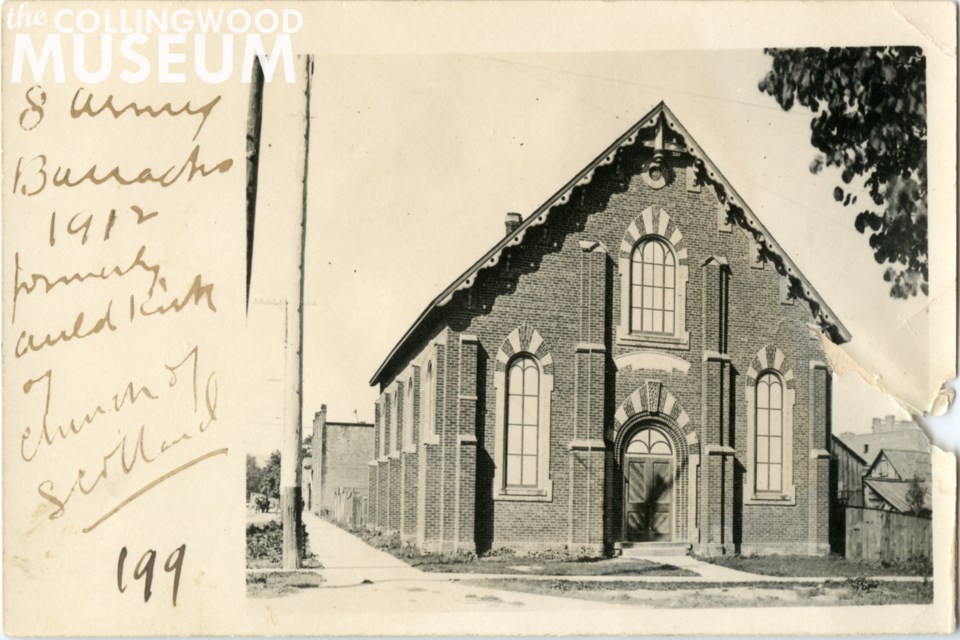This striking building once sat at the north-west corner of Ste. Marie and Ontario Streets, the present-day location of the Salvation Army Collingwood Community Church.
Originally constructed as the Auld Kirk (or Church of Scotland) circa 1876, this photograph documents the building’s later use by the Salvation Army in 1912.
Details about the Church of Scotland in Collingwood are quite limited and only two photographs in the Museum’s collection are known to document this early church structure.
A 143-year-old wooden statue (second photograph) is presently on display at the Collingwood Museum, having been collected by the Huron Institute. The statue is believed to have originated from the church.
An original label (third photograph) salvaged from the 1963 Carnegie Library fire documents the sculpture’s provenance: “This carving of the Auld Kirk building at the N.W. corner of Ste. Marie and Ontario, (now occupied by the Salvation Army) was carved by Mr. J Fleming in 1876 and named ‘The Burning Bush.’”
Museum records indicate that the sculpture was “restored;” however, the details or extent of the restoration work are unknown. A layer of paint was likely added as the earliest descriptions record the statue as grey. Today, the statue is decidedly green in colour.
If you have any information to share about today’s historic building, or the history of the Church of Scotland in Collingwood, please contact Collingwood Museum staff at [email protected].
Remember This is a weekly series of historic photographs submitted by the Collingwood Museum to CollingwoodToday.ca. These photographs were originally collected and documented by the Huron Institute in an historical catalogue entitled Huron Institute Paper and Records: Volume III. Much of Collingwood’s early history has been preserved due to the dedication and foresight of the early museum’s founders, namely its secretary-curator David Williams, upon its establishment in 1904.



